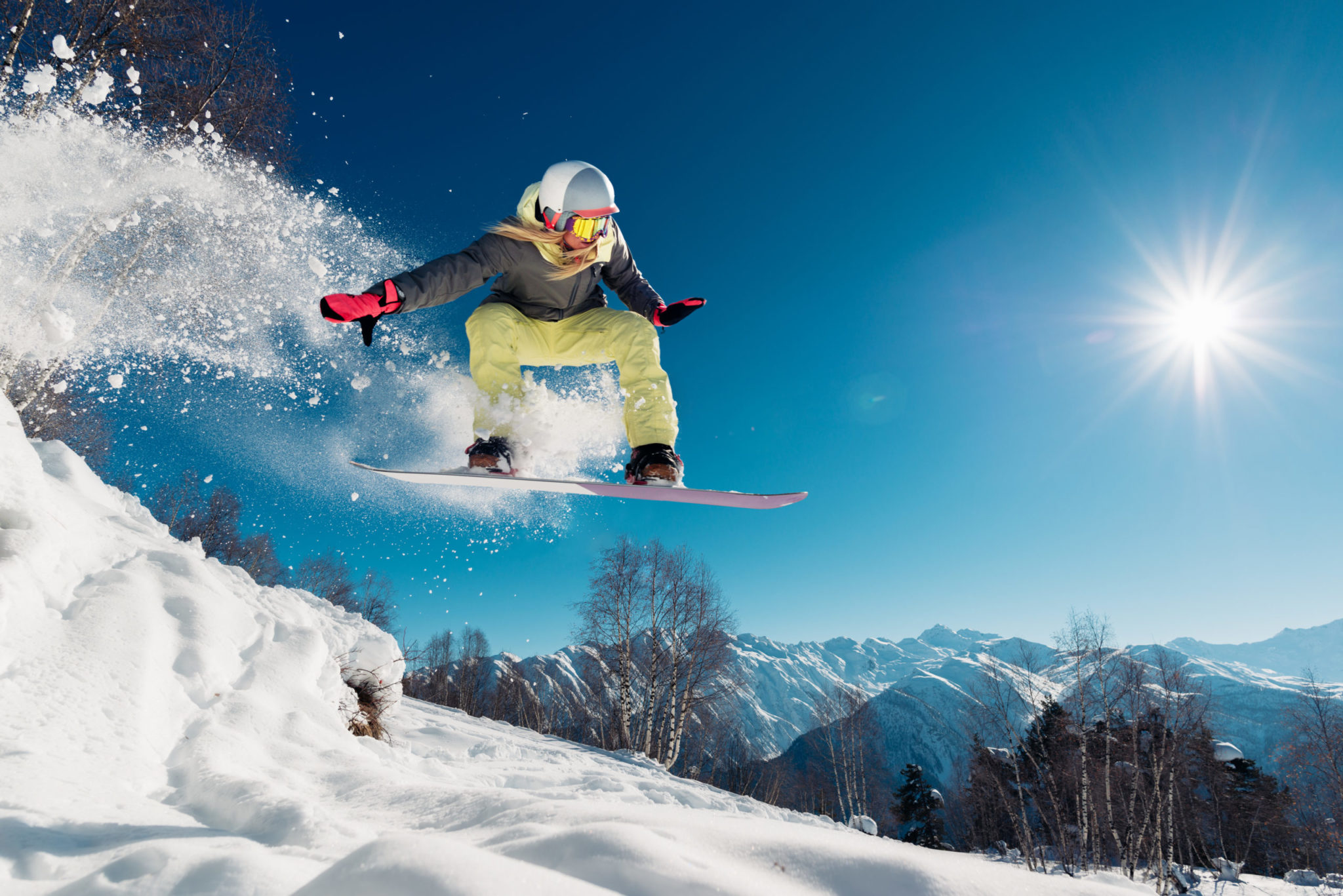As Canadians, winter sports are part of our heritage. Skiing, snowboarding, ice hockey, snowmobiling… One thing these activities have in common is that they are done at high speeds. And when high-speed is involved, a high risk for head injuries is inevitable.
In the latest available numbers, head and neck injuries made up nearly 20% of all alpine accidents. Head and neck injuries are the most serious injuries on the ice rink as well.
Head’s Up — Wear A Helmet
There are a number of basic protective steps that can be followed when discussing how to avoid head injuries in high-speed winter sports. And it all begins at the top — with the helmet.
Skiing and snowboarding lead the way for trips to the emergency room. Head and neck injuries are increasing in these sports, and can be catastrophic. Concussions in Ontario have been a growing concern for years.
Choosing a proper-fitting helmet is the number one defence for alpine addicts. It shouldn’t sit too high or too low. Helmet Standards policies have been adopted by both the Canadian Ski Council (CSC) and the Canadian Standards Association (CSA).
But a certified helmet and a good fit only go so far on the slopes. There are a number of other precautions to be aware of:
- Inspect your helmet regularly for signs of wear and tear. Any wear or damage can nullify its protective abilities.
- After a hard blow, a helmet should be replaced, even if it looks fine — There is likely damage to the unseen inner foam layer.
- Professionally adjusted bindings for the ski or snowboard are crucial to maintain control and prevent falls.
- Knowing your surroundings and your own level of experience are critical as well. Any collision on the slopes can easily lead to a head injury. Follow the CSC’s Alpine Responsibility Code — Be aware and ski with care.
Think While On The Rink
A CSA-approved hockey helmet is also a must for ice hockey or skating. The helmet should fit snug and carry the CSA certification sticker. And yes, you must wear a “hockey helmet” when doing any kind of skating — they are designed specifically for head injuries occurring on ice.
But similar to the alpine sports, avoiding serious head injuries on the ice takes more than just well-fitted head gear. In hockey, it doesn’t always take a fall to the ice to suffer head trauma. Concussions are the dreaded unseen head injury. A violent whiplash movement of the neck and head is all that’s needed for this type of injury.
Avoiding hits from behind or hits above the shoulders can help prevent concussive injuries on the ice. In addition, it’s important to ensure that all of your equipment fits properly—from your skates all the way up to your chin strap and helmet. A lack of proper balance or footing can lead to a fall, and ensuing head trauma.
Gear Up Your Head Gear
Motorized vehicles, such as snowmobiles, present a different risk profile for head injury. Ejection from the vehicle, crashing into fixed structures and rollovers are the most common incidents that can cause serious injury. According to Public Health Ontario, there were nearly 3,000 visits to the ER in one winter season due to snowmobile injuries in the most recent numbers available.
The PHO report notes studies that have shown that the use of proper helmets reduces the risk of injury by 64%. Head injuries in a snowmobile accident can include traumatic brain injuries with intracranial hemorrhages, loss of consciousness and even death.
The Highway Traffic Act requires drivers of snowmobiles of any age to wear approved helmets on and off-road. That also goes for any passengers, including those on sleds or toboggans being towed by the motorized vehicle.
An “approved” helmet for a snowmobile is essentially a motorcycle helmet, meeting the appropriate CSA standards.
And as usual, there are a number of other guidelines that can reduce the chance of accidents leading to head injury on a snowmobile:
- Never drive under the influence of drugs or alcohol
- Wear protective eyewear to ensure your vision is never impeded
- Have a good grasp on driving techniques and balancing requirements
- Ensure the vehicle is in good working order
- Obey the speed limits
Be it on the slopes, the rink, or off-road, using common sense, good judgement and approved helmets can greatly reduce the chances of traumatic brain injury while you’re enjoying the high speed of winter sports.
Have you or a loved one suffered any type of serious injury in a sporting activity that may have been due to negligence or the fault of another party? Know your rights, and call Horowitz Injury Law for a free no-obligation consult. Their experienced professionals can determine the best course of action to ensure full compensation to cover such things as medical and rehabilitation costs, lost wages, and many other possibly tragic consequences. Call 416-925-4100.




